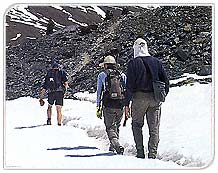Ladakh Travel Guide
---------------------------------------------------------------------------------------------------------------------------------------------------------------------------------------------------------------------------------
Ladakh Home » About Ladakh Travel Guide » Religion & Culture » Historical Background » Ancient Routes » Modern Routes
Central Ladakh » Fairs & Festivals » Oracles & Astrologers » Arts & Crafts » Cultural Tourism » Archery & Polo » Adventure in Ladakh
The New Areas » Tourist Information » Air Line Ticketing » Car Coach Rentals In Ladakh
Travel Agents & Tour Operators in Ladakh » Hotels & Resorts in Ladakh » Map »Travellers Tools
---------------------------------------------------------------------------------------------------------------------------------------------------------------------------------------------------------------------------------
Ladakh Home » About Ladakh Travel Guide » Religion & Culture » Historical Background » Ancient Routes » Modern Routes
Central Ladakh » Fairs & Festivals » Oracles & Astrologers » Arts & Crafts » Cultural Tourism » Archery & Polo » Adventure in Ladakh
The New Areas » Tourist Information » Air Line Ticketing » Car Coach Rentals In Ladakh
Travel Agents & Tour Operators in Ladakh » Hotels & Resorts in Ladakh » Map »Travellers Tools
---------------------------------------------------------------------------------------------------------------------------------------------------------------------------------------------------------------------------------
Modern Routes
 The
Route From Kashmir:
The
Route From Kashmir: Today, travellers from Srinagar drive on this route in the relative comfort of taxis, local buses or their own vehicles, taking two days and breaking journey at Kargil. It provides the best possible introduction to the land and its people. At one step as you cross the Zoji-la, you pass from the lushness of Kashmir into the bare uncompromising contours of a trans-Himalayan landscape. Dras, the first major village over the pass, inhabited by a population of mixed kashmiri and Dard origins, has the local reputation of being the second coldest permanent inhabited spot in the world. But in summer when the pass is open and the tourists are going thourgh, the standing crops and clumps of willow give it a gently, smiling look.
After Drass, the valley narrows, becoming almost a gorge. Yet even here it occasionally allows space for small patches of terraced cultivation, where a tiny village population ekes out a precarious existence. This is indeed a mountain desert, greened only by such scattered oases.
On departure from Kargil, the road plunges into the ridges and valley of the Zanskar range over a huge mound of alluvium, now made fertile by a huge irrigation scheme. Mulbekh with its gigantic rock engraving of Maitreya (Buddha-tocome) and its gompa perched high on crag above the village, is the transition from Muslim to Buddhist Ladakh. It is followed by two more passes, Namika-la (12,200 feet/ 3,719m) and Fotu-la (13,432 feet / 4,094 m). From Fotu-la, the road descends in sweeps and shirls, past the ancient and spectacularly sited monastery of Lamayuru, past amazing wind-eroded towers and pinnacles of lunar-landscape rock, down to the Indus at Khalatse- a descent of almost 4,000 feet/ 1,219 m in about 32 km. The Indus valley from Khalatse up to Upshi, where the road from Manali comes in, is Ladakh's historical heartland. The road follows the river, passing villages with their terraced fields and neat whitewashed houses, the roofs piled high with fodder laid in against the coming winter. Here and there the observant traveller notices the ruins of an ancient fort or palace or the distant glimpse of a gompa on a hill a little way from the road. The last of these is Spituk, only eight km. Out of Leh. And at last, Leh, the capital town of the region is visible, dominated by the bulk of its imposing 17th century palace.
Ladakh Home »
About Ladakh Travel
Guide » Religion
& Culture » Historical
Background » Ancient
Routes » Modern
Routes
Central Ladakh » Fairs & Festivals » Oracles & Astrologers » Arts & Crafts » Cultural Tourism » Archery & Polo » Adventure in Ladakh
The New Areas » Tourist Information » Air Line Ticketing » Car Coach Rentals In Ladakh
Travel Agents & Tour Operators in Ladakh » Hotels & Resorts in Ladakh » Map »Travellers Tools
Central Ladakh » Fairs & Festivals » Oracles & Astrologers » Arts & Crafts » Cultural Tourism » Archery & Polo » Adventure in Ladakh
The New Areas » Tourist Information » Air Line Ticketing » Car Coach Rentals In Ladakh
Travel Agents & Tour Operators in Ladakh » Hotels & Resorts in Ladakh » Map »Travellers Tools